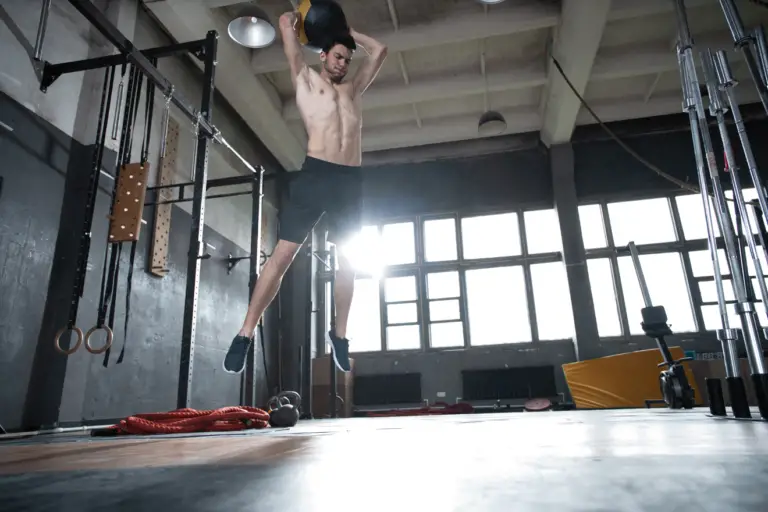Power and plyometric workouts
Below I present two power workouts and one plyometric workout that you can occasionally use in place of a weight training or cardio training workout. The power and plyometric workouts are not suitable for beginners, because the explosive nature of the exercises makes them risky. Therefore, before trying a workout, please refer to its suitability criteria. Please also make sure that you have read the Fundamentals of power and plyometric training.
An important point to keep in mind regarding power and especially plyometric training is that the focus should always be on quality rather than quantity. You are trying to develop a skill more than you are trying to condition your muscles, tendons, and central nervous system. Therefore, take your time with the exercises and try to focus. This is also important for your safety.
Make sure that you are fully warmed up before you start a power or plyometric workout. Five minutes of dynamic stretching followed by five minutes of jogging should suffice. For guidance on dynamic stretching, see How to warm up, in the Weight Training Guide.
You should also stretch your muscles after each workout with five minutes of static stretching. For guidance on static stretching, see How to stretch, in the Weight Training Guide.
Power workout 1: Lower body
- Power workout 1 is designed to help you to develop lower-body power and agility, as well as improve your jumping and sprinting abilities
- Suitability: Anyone who has completed the Men’s Beginner or Women’s Beginner weight training program
- Equipment required: Box
- Rest for 2 to 5 minutes between sets and exercises
- As you gain experience, try to gradually increase how high or far you jump, or how fast you move
| Exercise | Sets x Reps |
|---|---|
| Box jump (YT) | 3 x 5 |
| Broad jump (YT) | 3 x 5 |
| Skater jump (YT) | 3 x 30–45 s |
| Lateral box shuffle (YT) | 3 x 30–45 s |
| s = seconds | |
Power workout 2: Upper body
- Power workout 2 is designed to help you to develop the power of your upper body and core
- Suitability: Anyone who has more than 6 months of weight training experience
- Equipment required: Barbell
- Rest for 2 to 5 minutes between sets and exercises
- If new to the exercises, start off very lightly and learn proper form. Once you gather experience, start adding weight until the reps become challenging
| Exercise | Sets x Reps |
|---|---|
| Power clean (YT) | 3 x 3–5 |
| Snatch (YT) | 3 x 3–5 |
| Clean and jerk (YT) | 3 x 3–5 |
| Clapping push-up (on knees if necessary) (YT) | 3 x 5–10 |
Plyometric workout
- The plyometric workout is designed to help you to improve the explosive performance of your upper body, lower body, and core
- Suitability: Anyone who has more than 6 months of weight training experience and who has mastered the power workouts
- Equipment required: Boxes, a medicine ball, and a wall against which to throw the ball
- Rest for 2 to 5 minutes between sets and exercises
- For the two depth jump exercises, make sure that the platform or box from which you drop isn’t too tall. The reason is that the taller the box is, the longer your amortization phase will be. Your goal while performing the depth jump exercises is to increase the height or distance of your jump while keeping the amortization phase below 0.25 seconds. The amortization phase is explained in Fundamentals of power and plyometric training
- For the two throwing exercises, choose a medicine ball of a suitable weight. Your goal during these exercises is to catch and launch the ball back at the wall as quickly as possible. As you get stronger and faster, increase the weight of the ball
| Exercise | Sets x Reps |
|---|---|
| Depth jump to high jump (YT) | 3 x 3–5 |
| Depth jump to broad jump (YT) | 3 x 3–5 |
| Standing medicine ball chest throw (YT) | 3 x 30–45 s |
| Seated or standing lateral medicine ball throw (YT) | 4 x 30–45 s |
| s = seconds | |


